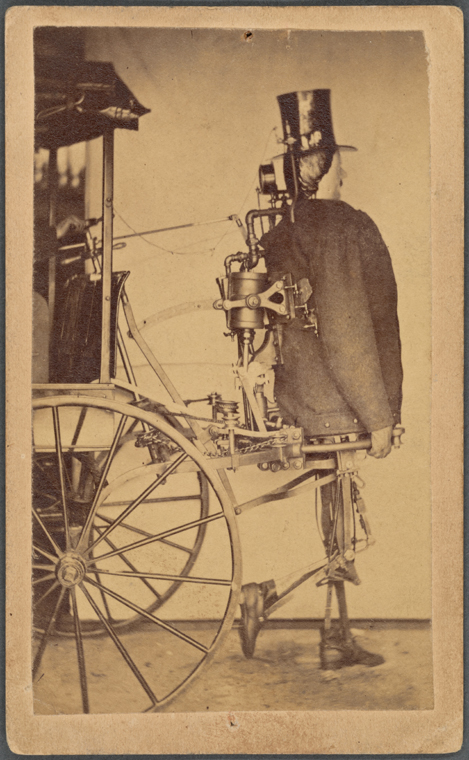The **Steam Man of Newark** was an 1868 steam-powered, human-shaped traction engine built in Newark, New Jersey by Zadoc P. Dederick with **Isaac Grass**. Conceived as a walking locomotive that could pull a small carriage, it became a media sensation and an enduring icon of early robot imagery—years before the word *robot* (1920) existed.

Remote image source ![]()
# What It Was A seven-foot-nine, roughly 500-pound metal figure with a boiler in its torso, piston “muscles,” jointed legs, and a stovepipe hat as smokestack. The man was rigidly linked to a two-wheeled carriage for stability and steering; a driver rode in the carriage and controlled throttle and brakes.
# How It Worked Dederick and Grass patented an **“Improvement in Steam-Carriage”**: steam pistons and cranks driving the legs in a timed sequence, with rods and springs managing lift and push. Fuel and water were stored in the carriage; exhaust vented through the hat. Contemporary claims boasted impractical speeds (up to “60 mph” on smooth surfaces), but the design was best understood as a **showpiece walking tractor** rather than a road vehicle.
# Showings & Myth Newspapers reported public demonstrations in Newark (e.g., at **Crump’s Garden**) and exhibitions in other U.S. cities. Most reliable reports suggest the Steam Man **cycled its legs while hoisted** or moved only short, controlled steps; insurers often limited live “walking.” Sensational coverage created the durable myth that it strode confidently down city streets.
# Name, Look, and Context Workmen nicknamed the prototype **“Daniel”** (after the famously large Daniel Lambert). Surviving images and commentary also reflect Reconstruction-era racial caricature in some schematics and press, a reminder that Victorian “mechanical men” were entangled with contemporary ideas about labor, servitude, and spectacle.
# Cultural Impact - Inspired the dime novel “The Steam Man of the Prairies”** (1868), launching the boy-inventor / edisonade tradition. - Became a touchstone for **early robot/automaton imagery** in popular culture and later retrospectives. - The patent diagrams and photographs now circulate as classic public-domain “proto-robot” visuals.
# Public-Domain Images & Primary Sources
- US Patent (1868) – Improvement in Steam-Carriage ![]() - NIU Dime Novels – Steam Man
- NIU Dime Novels – Steam Man ![]() - Wikipedia – Zadoc P. Dederick
- Wikipedia – Zadoc P. Dederick ![]() - Cyberneticzoo – Steam Man notes and clippings
- Cyberneticzoo – Steam Man notes and clippings ![]() - David Buckley – 1868 Dederick’s Steam Man
- David Buckley – 1868 Dederick’s Steam Man ![]()